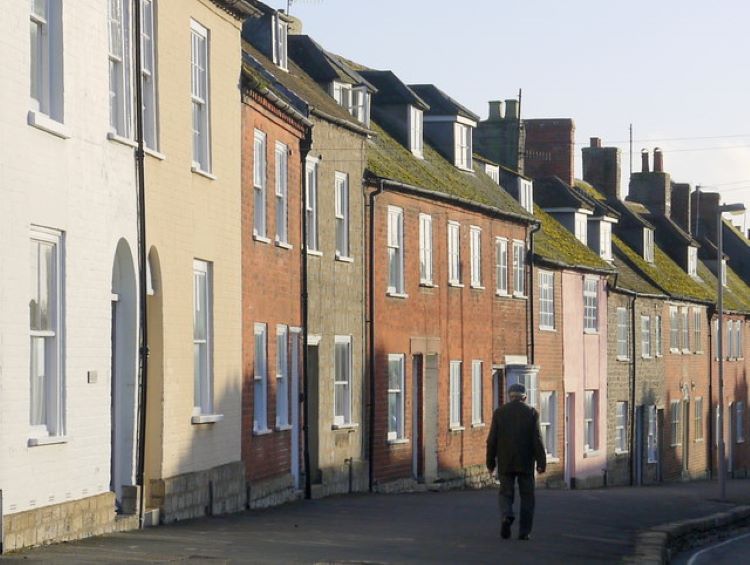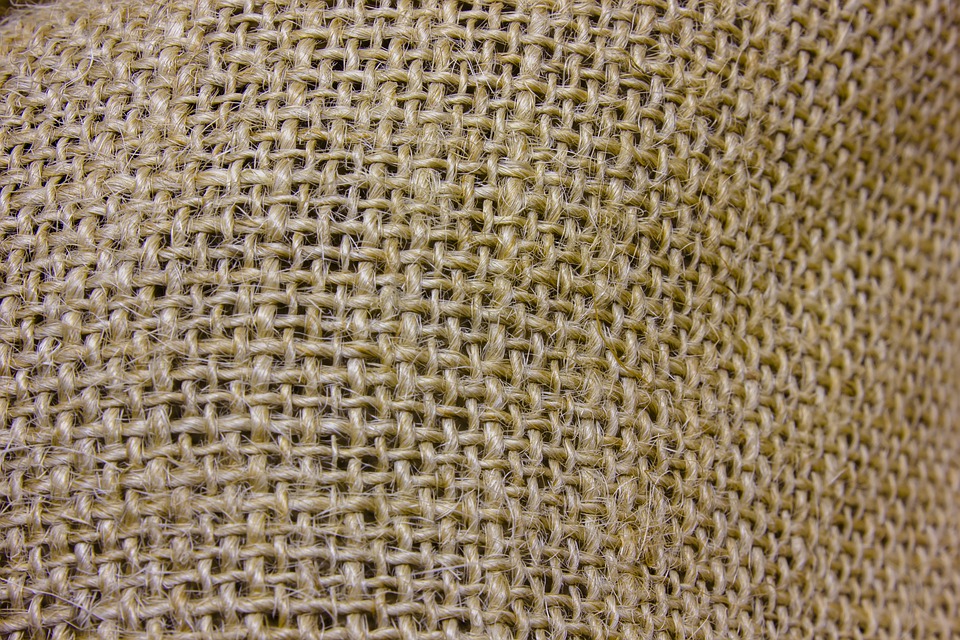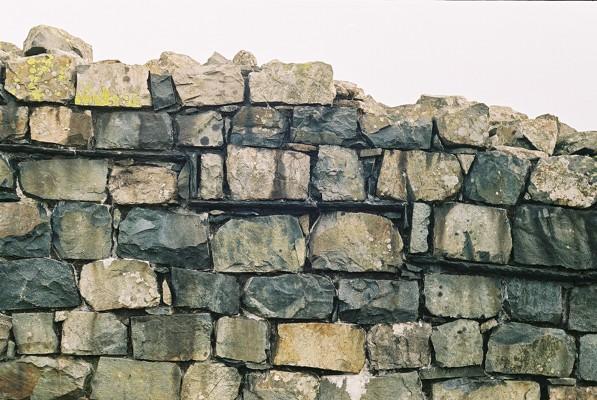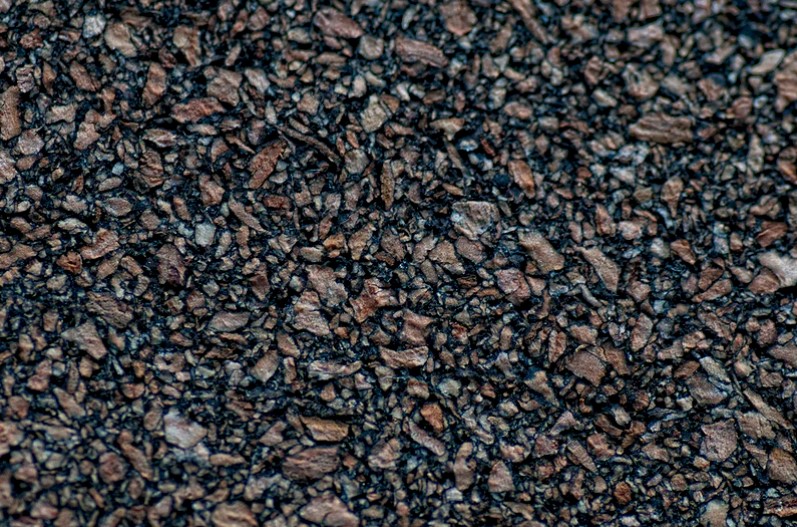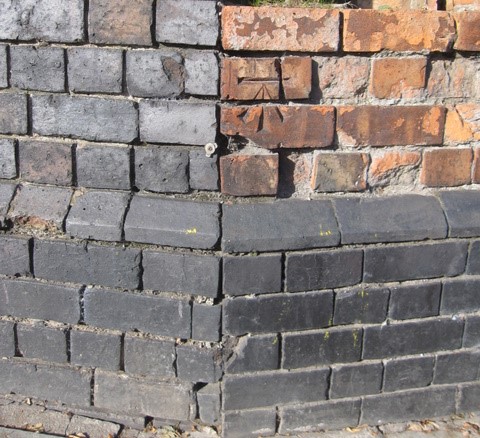Types of damp-proof courses
|
These terraced houses near Bridport were made from brick with the lower courses of the wall made of Bothenhampton stone (also known as Baunton stone). This local stone is naturally impervious to water and acts as a damp-proof course. |
Contents |
[edit] Introduction
Rising damp is caused by capillary action drawing moisture up through the porous elements of a building’s fabric. Rising damp, and some penetrating damp, can be caused by faults to, or the absence of, a damp-proof course (DPC) or damp-proof membrane (DPM).
A damp-proof course is a horizontal barrier built into the walls. It is typically located 150 mm above ground level.
[edit] Standards
In the construction of new buildings, DPCs are required to prevent rising damp. In some situations they are also required to prevent penetrating damp.
Approved document C of the Building Regulations, Site preparation and resistance to contaminants and moisture, suggests that a DPC may be a, ‘…bituminous material, polyethylene, engineering bricks or slates in cement mortar or any other material that will prevent the passage of moisture.’

|
A DPC made from polyethylene may be referred to as a DPM. For more information, see Damp proof membrane DPM.
Standards for DPCs are provided in BS 8215:1991 Code of practice for design and installation of damp-proof courses in masonry construction.
[edit] Materials used for DPCs
DPCs can be created by impervious materials or techniques, including:
- Bitumen roll.
- Slates and cement mortar.
- Mastic asphalt.
- Lead or copper sheeting.
- Tar and pitch.
- Engineering bricks.
- Chemical injections.
[edit] Bitumen roll DPC
Bitumen is a petroleum-based hydrocarbon that occurs naturally as a concentrated substance in oil sands and pitch lakes. For standard DPC purposes, bitumen roll DPC may consist of a thin layer of non-viscous bituminous material made with a waterproof hessian cloth base. Extra protection may be provided by using a thin layer of copper or lead foil interlining instead of hessian cloth.
|
Hessian cloth like this can strengthen or reinforce the bitumen roll. This material is also sometimes referred to as burlap. |
Bitumen roll is one of the least expensive forms of DPC. It may also be one of the easiest to use.
[edit] Slates and cement mortar DPC
It is possible to create an effective form of DPC by constructing a double layer of slates in cement mortar. Any type of slates can be used, and the mortar can be made up of two parts clean sand and one part Portland cement.
|
Ancient Romans used slate without mortar as a DPC to block rising damp. In this example from the Hardknott Roman fort in Cumbria, the slate also serves to separate the original Roman construction (below) from modern reconstruction (above). |
This measure requires little specialised skill and can be a viable alternative if bitumen roll is not available or an abundance of slate exists.
[edit] Mastic asphalt DPC
To use this method of DPC requires temperatures high enough to melt natural asphalt. Pure bitumen is then added to the heated asphalt until a workable consistency is achieved. This substance is then spread on the wall.
|
Natural asphalt used as DPC material may require two separate applications to prevent cracking. |
This can be an expensive method and may require an advanced level of expertise.
[edit] Lead or copper sheeting DPC
Sheets of lead or copper provide the same type of DPC as bitumen rolls. The technique for application is also quite similar.
|
When used for DPC, copper sheets may become corroded over time. |
In some instances, non-ferrous metallic materials may be susceptible to decay when attacked by salts that might occur in damp mortar. This can reduce the effectiveness as the thickness of the material decreases.
[edit] Tar and pitch DPC
When sand is added to tar and pitch and then melted in a boiler, the resulting substance can form an effective and inexpensive DPC. The molten material is poured onto the wall to cover the surface.
Mortar should be placed on the edges of the wall to prevent the molten material from running down the sides of the wall. Once the mixture cools, it will solidify and form a waterproof layer.
In some instances, this substance can become brittle and may crack in extremely cold temperatures.
[edit] Engineering bricks
Sometimes referred to as impervious brick, these bricks are stronger and less porous than other types of brick.
|
Near Chester Bridge, a high water benchmark was cut into the softer red brick rather than the adjacent, much harder, blue engineering bricks. |
Early forms of impervious bricks were sometimes referred to as blue bricks. A higher firing temperature typically gave these bricks their blue colour (although in some instances they may appear black).
Engineering bricks can be used to create an inexpensive and effective DPC when bedded in Portland cement mortar. A course of one or two of these impervious bricks is typically sufficient.
Modern low absorption or DPC engineering bricks fall into two categories: DPC1 (with a maximum water absorption rate of 4.5%) and DPC2 (with a 7% maximum water absorption rate).
[edit] Chemical injection DPC
Some older buildings may require a chemical injected DPC. This can create a continuous chemical barrier to rising damp. For more information, see Chemical injected DPC.
[edit] Related articles on Designing Buildings
Featured articles and news
International Electrician Day, 10 June 2025
Celebrating the role of electrical engineers from André-Marie Amperè, today and for the future.
New guide for clients launched at Houses of Parliament
'There has never been a more important time for clients to step up and ...ask the right questions'
The impact of recycled slate tiles
Innovation across the decades.
EPC changes for existing buildings
Changes and their context as the new RdSAP methodology comes into use from 15 June.
Skills England publishes Sector skills needs assessments
Priority areas relating to the built environment highlighted and described in brief.
BSRIA HVAC Market Watch - May 2025 Edition
Heat Pump Market Outlook: Policy, Performance & Refrigerant Trends for 2025–2028.
Committing to EDI in construction with CIOB
Built Environment professional bodies deepen commitment to EDI with two new signatories: CIAT and CICES.
Government Grenfell progress report at a glance
Line by line recomendation overview, with links to more details.
An engaging and lively review of his professional life.
Sustainable heating for listed buildings
A problem that needs to be approached intelligently.
50th Golden anniversary ECA Edmundson apprentice award
Deadline for entries has been extended to Friday 27 June, so don't miss out!
CIAT at the London Festival of Architecture
Designing for Everyone: Breaking Barriers in Inclusive Architecture.
Mixed reactions to apprenticeship and skills reform 2025
A 'welcome shift' for some and a 'backwards step' for others.
Licensing construction in the UK
As the latest report and proposal to licence builders reaches Parliament.
Building Safety Alliance golden thread guidance
Extensive excel checklist of information with guidance document freely accessible.
Fair Payment Code and other payment initiatives
For fair and late payments, need to work together to add value.
Pre-planning delivery programmes and delay penalties
Proposed for housebuilders in government reform: Speeding Up Build Out.
High street health: converting a building for healthcare uses
The benefits of health centres acting as new anchor sites in the high street.








